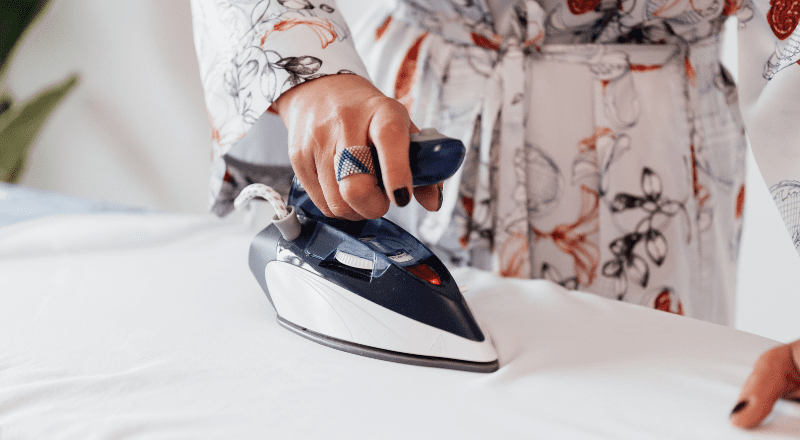
The guidelines for ironing begin long before you get out the iron and the ironing board. It’s true, ironing is a fairly straightforward process, however it can be somewhat tricky if you’ve never done it before, or aren’t used to doing it on a regular basis. Keep reading to find out the secrets behind a perfect ironing job.
Wash Your Clothes Before Ironing
Always be sure to wash and dry your clothes prior to ironing them. You don’t want to iron excess dirt into your clothes. Especially if they have stains on them. Also, the heat from your iron will set the stain into the fabric permanently. This will ruin the quality of your garment material, making the stains much harder to get out afterwards.
Have a grease or oil stain on your clothing that you want to iron? Feel free to read our published blog post today to learn more about how to get rid of these types of stains.
Iron Based on Fabric Type
First, it’s important to acquire all the necessary equipment together. As the iron begins to get hot, you want to have all your materials assembled before you begin ironing. You don’t want to mess around with a hot iron while trying to grab a clothing item. So, always keep everything ready before turning the iron on.
Materials:
- You will need an ironing board, which is a large, flat surface over which you can iron your clothing.
- You will need an old cloth to protect your delicate items/fabrics.
Always Read the Care Label
Next, always read the care label of each garment that you want to iron. There will almost always be ironing guidelines written or shown with symbols on the care label of your clothing.. Remember, not every clothing item is going to have the same recommendations when it comes to ironing. If you have several things to iron, start with the fabric type that needs the coolest temperature setting and work up to the one that needs the hottest iron. This will save you time, energy and even prevent accidental melting or scorching.
Sort Out Laundry Based on Fabric Type Prior to Ironing
Different fabric types require different means of ironing. You must always sort your clothing based on its specific type of fabric/material. Cotton clothing, for example, should be ironed differently compared to silk clothing. You will want to start ironing the clothes that require the lowest heat setting, and then move up from there, as stated above.
Rayon, silk, and wool fabrics should all be ironed at a low setting at all times. For rayon and silk, turn the items inside out prior to ironing the garment. For wool items, place a damp cloth between the item and the iron in order to receive best results.
Delicate fabrics such as lace and wool shouldn’t have direct contact with the iron. Always use a damp cloth when ironing these types of fabrics.
Medium heat should be used for polyester materials, and high heat setting should be used for cotton materials. It is usually best to iron clothes while they are still slightly damp. And both of these fabrics should be slightly damp prior to ironing- not soaked. The exception is when you need a completely dry iron on fabrics that water-stain.
When ironing collars of shirts, cuffs, or pocket hems that are double thickness of fabric, iron on the inside first and then on the outside in order to smooth any final wrinkles of the garment.
Turn Delicate Fabrics Inside-Out Prior To Ironing
Some fabrics are very delicate compared to other fabrics. Ironing the surface of a fabric can cause it to look burnt or damaged, especially if the iron is on a high setting. If you’re working with any of the following fabrics, turn the clothing items inside out prior to ironing.
- Corduroy
- Linen
- Rayon
- Satin
- Silk
Contact Red Hanger
Need assistance when it comes to ironing your garments? Red Hanger is here to help. Find a location near you today and bring your garments in for professional ironing.